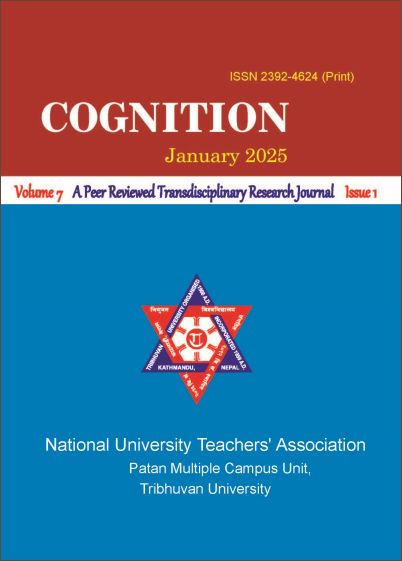Determinations of Antenatal Care Utilization Among Reproductive Age Women in Lumbini Province, Nepal
DOI:
https://doi.org/10.3126/cognition.v7i1.74725Keywords:
ANC visits, Lumbini Province, Determinants, Maternal Health, UtilizationAbstract
This study examines the factors influencing Antenatal care (ANC) utilization among women aged 15–49 in Lumbini Province, Nepal, using data from the 2021 Nepal Demographic and Health Survey (NDHS). Logistic regression analysis identifies significant determinants of ANC attendance, including age, birth order, education, and wealth. This study shows that in a similar meter from the previous, women in the age group of 20-24 years are at a risk of almost 4.78 times greater for attending ANC visits than women below it. The odds continue to increase as with an all-time high validation for women aged 30-49 years (OR = 11.75, p = 0.017). Where birth order sometimes negatively affects ANC usage, women with three or more children will less likely seek ANC (OR = 0.344, p = 0.063). There is a positive association between the ANC use and education because those women with better education are 2.83 more likely to access ANC services, although it is not very significant. Indeed, differences in the economics that do exist show that poorer women attend ANC as showed to by an OR of 0.384, which denotes that they are 0.384 times less likely to attend ANC compared to the poorest (OR = 0.384, p = 0.045): with wealth, indirect influences of religion, caste/ethnicity, and location using socio-economic factors being biased toward ANC use. It shows that, it should to improve ANC for young mothers, women with higher birth orders, and income. Addressing these gaps therefore needs a multi-faceted approach in terms of strengthening education, financial support, and healthcare infrastructure. The findings provide the much needed evidence and policymakers to strategize around maternal health equity and SDG pathways that give detail in regard to addressing maternal and child health issues in Lumbini Province.




